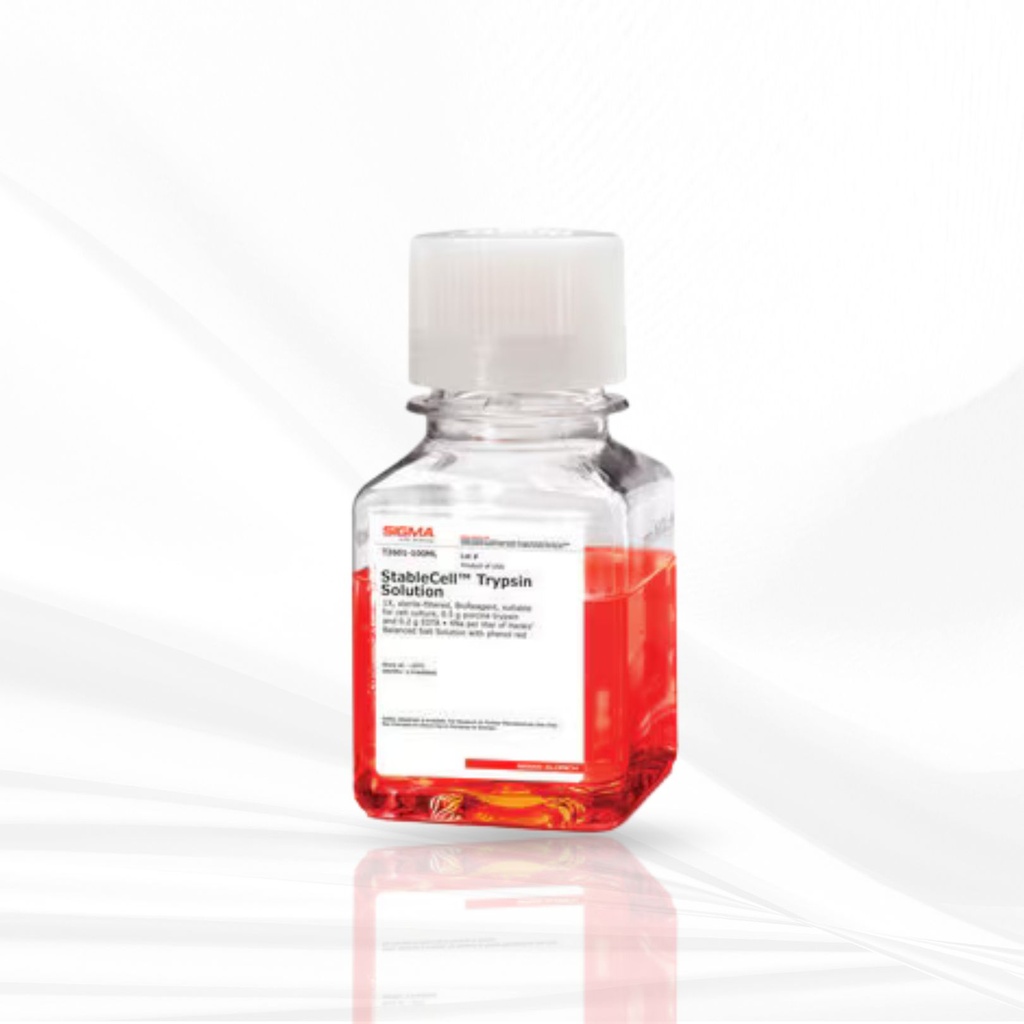General description
Trypsin consists of a single-chain polypeptide of 223 amino
acid residues, produced by the removal of the N-terminal hexapeptide from
trypsinogen which is cleaved at the Lys - lle peptide bond. The sequence of
amino acids is cross-linked by 6 disulfide bridges. This is the native form of
trypsin, beta-trypsin. BETA-trypsin can be autolyzed, cleaving at the Lys - Ser
residue, to produce alpha-trypsin. Trypsin is a member of the serine protease
family.
Application
The typical use for this product is in removing adherent
cells from a culture surface. The concentration of trypsin necessary to
dislodge cells from their substrate is dependent primarily on the cell type and
the age of the culture.
Trypsin-EDTA solution was used:
- in
detaching HT29 human colorectal cancer cells cultured in RPMI 1640 which
was supplemented with 10 % fetal calf serum, during relative cell
frequency determination of high concentration samples.[1]
- to
trypsinize the transient transfected human embryonic kidney tcA-201 cell
line.[2]
- to
enzymatically release mouse fibroblasts cells (cell line L929) adhered to
the scaffold, during cell culturing to assess the influence of several
modified treatments of Poly(L/D)lactide 96/4 non-woven scaffolds and
fibres.[3]
- to
dissociate cells from the culture dish for flow cytometry analysis.[3]
Suitable for use in the preparation of single cell
suspension for sequencing.
Biochem/physiol Actions
Trypsin cleaves peptides on the C-terminal side of lysine
and arginine residues. The rate of hydrolysis of this reaction is slowed if an
acidic residue is on either side of the cleavage site and hydrolysis is stopped
if a proline residue is on the carboxyl side of the cleavage site. The optimal
pH for trypsin activity is 7-9. Trypsin can also act to cleave ester and amide
linkages of synthetic derivatives of amino acids. EDTA is added to trypsin
solutions as a chelating agent that neutralizes calcium and magnesium ions that
obscure the peptide bonds on which trypsin acts. Removing these ions increases
the enzymatic activity.
Serine protease inhibitors, including DFP, TLCK, APMSF, AEBSEF, and aprotinin,
amongst others, will inhibit Trypsin.
Components
Trypsin Solution (2.5 g/l porcine trypsin and 0.2 g/l
EDTA•4Na in Hank′s Balanced Salt Solution with phenol red, 1X, cell culture
tested)
Caution
This product is stored frozen between -10 and -40°C.
Repeated cycles of freezing and thawing should be avoided.
Preparation Note
This product does contain phenol red. Due to shipment on dry
ice, there could be significant carbon dioxide buildup in the package. This CO2 may
enter the solution and lower the pH slightly, giving an orange rather than
pinkish color. The orange solution will still be suitable for use, or the pH
can be adjusted with sodium hydroxide. Incubating cells with too high a trypsin
concentration for a long period can damage cell membranes and kill the cells.
Solubilizing trypsin or diluting it from a concentrated solution should be done
with a buffered salt solution containing no Ca2+ or Mg2+.
